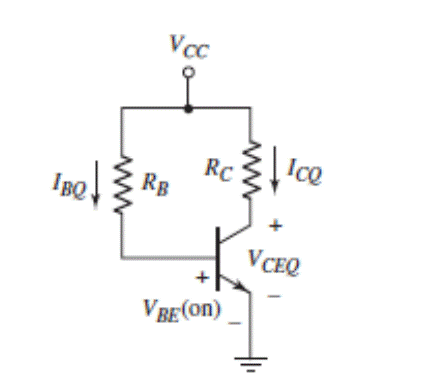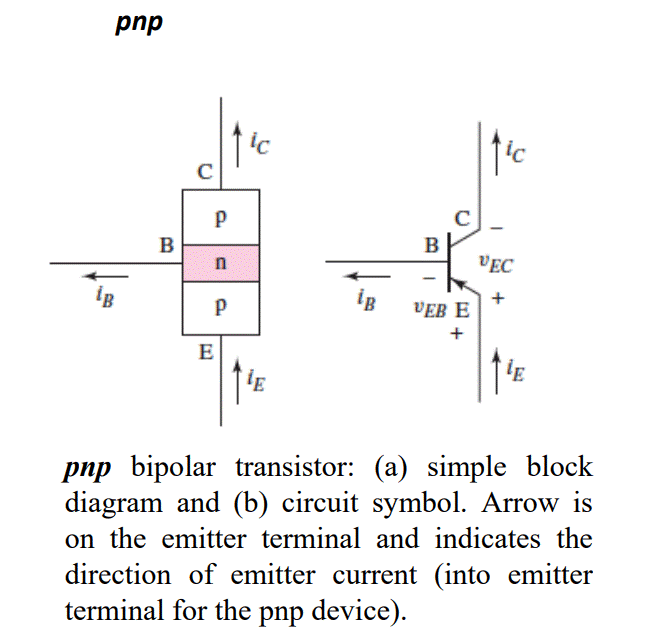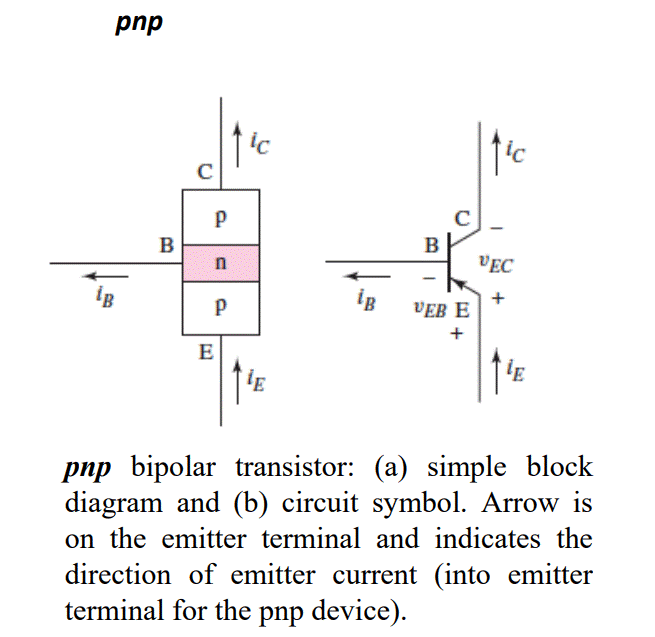
Transistors are everywhere. You might not see them, but your life depends on them. From your smartphone to your Wi-Fi router and your microwave oven, transistors are the microscopic workhorses behind the scenes. Their ability to switch and amplify signals makes them indispensable to digital and analog electronics.
But what really makes transistors important is how scalable and reliable they are. They made it possible to shrink computers from room-sized giants to devices that fit in your pocket. They are fast, require little power, and can function in enormous quantities. That’s why a modern processor has over 10 billion transistors on a single chip. Without them, we wouldn’t have AI, cloud computing, or smart devices.
The transistor sparked the digital revolution, setting the foundation for integrated circuits, microprocessors, and all forms of modern computing. Without exaggeration, it’s arguably the most important invention of the 20th century.
Types of Transistors Explained Simply
There are many types of transistors, but the two most common ones are:
Bipolar Junction Transistor (BJT)
This type controls current flow using both electrons and holes. It has three parts:
- Emitter
- Base
- Collector
When a small current is applied to the base, it controls a larger current flowing from emitter to collector. Think of it as turning on a faucet with a gentle touch.



Field-Effect Transistor (FET)
FETs control current using only electrons or holes. The most common subtype is the MOSFET (Metal Oxide Semiconductor Field Effect Transistor), widely used in computers.
FETs are controlled by voltage rather than current. This means they require even less energy, which makes them perfect for battery-powered devices.
Both types act like gates that decide when current should flow and when it shouldn’t.

How Do Transistors Work in Plain English?
Imagine a valve controlling water flow in a pipe. You turn the valve to let the water pass or stop it. A transistor is like that valve, but instead of water, it controls the flow of electricity.
Let’s take a basic NPN transistor (a common type):
- When there’s no current to the base, the path from the collector to the emitter is blocked. No current flows.
- When you apply a small current to the base, it opens the path. Now, a larger current can flow from the collector to the emitter.
This simple principle is what allows transistors to act as on/off switches or amplifiers, making them the backbone of all logic circuits.
Where Are Transistors Used?
The versatility of transistors is mind-blowing. Here’s a glimpse of where they shine:

| Device | Purpose of Transistor |
|---|---|
| Smartphones | Logic gates, signal processing |
| Computers | CPU, RAM, GPU switching |
| Hearing Aids | Amplify sound |
| Televisions | Signal decoding and amplification |
| Solar Inverters | Switch DC to AC |
| Cars | Control sensors, lights, engine systems |
| Routers | Process and direct digital signals |
| Medical Equipment | Reliable signal control in life-critical applications |
They are the “invisible muscles” behind automation, digital logic, data storage, and processing.
The History Behind the Transistor
The transistor was born in 1947 at Bell Labs. Three American physicists—John Bardeen, Walter Brattain, and William Shockley—were trying to find an alternative to vacuum tubes. Their invention led to the first point-contact transistor, which soon evolved into more reliable and smaller junction transistors.
In 1956, the trio won the Nobel Prize in Physics, and by the 1960s, transistors had already replaced vacuum tubes in most devices. This innovation kickstarted the era of miniaturized electronics and laid the groundwork for Moore’s Law—a prediction that transistor count on chips would double every two years.
Understanding the Term “Semiconductor”
At the heart of every transistor lies a semiconductor—a material that conducts electricity only under certain conditions. The most commonly used material? Silicon.
A semiconductor can act as both a conductor and an insulator. This duality allows transistors to switch states, making digital logic possible.
There are two main types of semiconductor materials:
- N-type (more electrons)
- P-type (more holes or lack of electrons)
By combining these materials cleverly, engineers create transistors that respond to tiny signals and control huge electrical processes.
Transistors vs Vacuum Tubes
Before transistors, we had vacuum tubes, which also worked as amplifiers and switches. But they had major problems:
- They were bulky
- Consumed a lot of power
- Broke easily
- Generated heat
Transistors solved all these issues. They were smaller, more durable, energy-efficient, and could be mass-produced. The switch from tubes to transistors in the 1950s and 60s made personal computing, space travel electronics, and the digital age physically and economically feasible.
NPN and PNP Transistors in Simple Terms
These are the two main types of BJTs.
- NPN Transistor: When you apply a small positive current to the base, it allows current to flow from the collector to the emitter.
- PNP Transistor: Opposite in behavior, requiring a small negative base current to turn on.
Think of NPN as “current in, go” and PNP as “no current, go”. They’re like mirror images, and designers choose one based on how the circuit needs to behave.
How Transistors Amplify Signals
Have you ever seen someone whisper into a microphone, only for the sound to fill a whole room? That’s a transistor at work—amplifying the weak audio signal.
A small input signal into the base can control a much larger output current flowing from collector to emitter. This way, a transistor acts like a volume booster, a vital role in radios, hearing aids, and sound systems.
How Transistors Act as Switches
Digital electronics is based on binary—1s and 0s. In this world, a transistor is either on (1) or off (0).
Here’s how:
- If the base receives a signal, the transistor turns on and allows current through.
- If not, it remains off.
This basic on/off behavior enables computers to process instructions, store memory, and make decisions. Billions of these switching actions happen every second in your CPU.
Transistors and Digital Logic
Transistors form logic gates—the foundational components of computing. Each logic gate, like AND, OR, or NOT, is built using a handful of transistors.
Put together, these gates form adders, multipliers, memory cells, and eventually entire microprocessors. Without transistors, digital logic wouldn’t exist.
Why Size Matters in Transistors
One of the most incredible things about transistors is how small they’ve become. Early versions were the size of a fingernail. Today, modern transistors measure just a few nanometers—thousands of times smaller than the width of a human hair.
This miniaturization follows Moore’s Law, which predicted that the number of transistors on a microchip would double about every two years. As a result:
- Devices got faster.
- Computers became cheaper.
- Technology became more accessible.
In short, shrinking transistors is how we got from room-sized computers to smartwatches.
How Many Transistors Are in a Smartphone?
Here’s a stat that might blow your mind: modern smartphone processors have tens of billions of transistors.
For instance, Apple’s M1 chip features 16 billion transistors. Qualcomm’s Snapdragon 8 Gen 2 sports around 10 billion. These mind-boggling numbers are packed into chips no larger than a coin.
Every app you open, call you make, or video you stream—transistors are behind every function.
Microprocessors and Transistors
The microprocessor is the brain of your device. It’s where transistors shine the most.
Inside a microprocessor:
- Logic transistors perform calculations.
- Memory transistors store temporary data.
- Control transistors manage input/output.
Billions of them work in harmony to perform complex tasks in milliseconds. The faster the processor, the better it can handle multiple tasks, play high-end games, or run powerful apps—all thanks to transistors.
Transistor Symbols for Beginners
Transistors are often drawn using symbols in circuit diagrams. Here’s a simple breakdown:
| Type | Symbol Feature | What It Means |
|---|---|---|
| NPN BJT | Arrow on emitter pointing out | Current flows out |
| PNP BJT | Arrow on emitter pointing in | Current flows in |
| N-Channel FET | Line with a gate parallel to channel | Voltage-controlled current |
Once you understand these basics, interpreting circuits becomes a lot easier. Even beginners can start sketching simple diagrams using transistor symbols.
Common Misconceptions About Transistors
There’s a lot of confusion around what transistors can or can’t do. Let’s bust some myths:
- Myth: Transistors are outdated.
- Truth: They’re constantly evolving and more crucial than ever in quantum computing and AI.
- Myth: Bigger transistors are more powerful.
- Truth: Smaller ones are faster, more efficient, and allow higher integration.
- Myth: Only experts can understand them.
- Truth: As you’re seeing now, anyone can grasp how they work with the right explanation!
Simple Transistor Circuit Project You Can Try
Want to get hands-on? Try this classic transistor switch project.

Materials:
- NPN transistor (e.g., 2N2222)
- LED
- 1kΩ resistor
- Breadboard
- 9V battery
- Push button
Steps:
- Connect the emitter to ground.
- Connect the LED and resistor in series from collector to positive supply.
- Connect the base through the push button and a 1k resistor to the positive terminal.
- When you press the button, the LED lights up!
That’s your transistor acting as a switch!
How to Read a Transistor Datasheet Easily
A datasheet gives technical information about a transistor. Here’s how to simplify it:
| Term | What It Means |
|---|---|
| Vce | Voltage between collector and emitter |
| Ic | Maximum collector current |
| hFE or β | Gain factor (amplification level) |
| Pd | Power dissipation (how much heat it handles) |
Knowing just these few terms helps hobbyists choose the right transistor for any project.
What Makes Transistors So Reliable?
Transistors have no moving parts. That means:
- Less wear and tear
- No noise
- High lifespan
They’re resistant to mechanical shock and can last for decades. In satellites, nuclear plants, and medical devices, this reliability is critical.
Limitations of Transistors
Despite their brilliance, transistors have limits:
- Heat: Too much current can fry them.
- Noise: Some transistors produce electrical noise, affecting signals.
- Speed ceiling: Quantum effects start to appear as we shrink them more.
Still, engineers innovate daily to overcome these hurdles.
The Future of Transistors
From carbon nanotubes to graphene to quantum transistors, the future is full of potential. Researchers are designing molecular transistors the size of a few atoms!
These could make computing even faster and more efficient—possibly 1000x faster than today’s tech.
How Transistors Enable the Internet
Every time you send a message or browse a website, transistors help:
- Route packets
- Amplify data signals
- Control modems and routers
Fiber optics carry the light, but transistors process and decode the information.
Why Transistors Are a Pillar of AI
AI needs to process massive data sets in parallel. Modern AI chips like NVIDIA’s Tensor Cores rely on transistors designed specifically for machine learning tasks.
Without these custom-built transistors, training models like ChatGPT wouldn’t be possible!
Transistors in Renewable Energy Tech
From solar inverters to electric vehicle chargers, transistors convert and manage energy efficiently. In a solar setup:
- They convert DC to AC
- Control battery charging
- Improve power conversion efficiency
They’re key players in building a sustainable tech future.
Kids and Transistors: How to Explain It to a Child
Imagine a transistor as a magic faucet. You turn it with your finger (signal), and it lets water (electricity) flow through. If no one turns the faucet, the water stays off.
It’s a smart faucet that listens to another tap to know when to open or close!
What If Transistors Didn’t Exist?
We’d still be using:
- Bulky vacuum tubes
- Massive computers
- Limited processing speed
No smartphones. No internet. No Netflix. The digital era wouldn’t exist. Transistors are the heartbeat of progress.
Can You Build a Transistor at Home?
Technically, yes—but it’s difficult. You’d need:
- Pure silicon wafers
- Doping chemicals
- Cleanroom conditions
Homemade versions are fun for science fair demos, but real ones are made with atomic-level precision in billion-dollar fabs.
FAQs
What is the simplest definition of a transistor?
A transistor is a tiny switch that turns electricity on or off or makes weak signals stronger.
Why are transistors so small?
Smaller transistors mean faster, cheaper, and more powerful devices.
How many transistors are in a computer?
Modern CPUs have billions. For example, Apple’s M1 chip has 16 billion transistors.
Can I use a transistor without understanding electronics?
Yes! Basic transistor circuits are beginner-friendly and often used in DIY electronics.
What’s the difference between NPN and PNP transistors?
NPN allows current when base voltage is positive; PNP allows it when the base is negative.
Are transistors still evolving?
Absolutely. With quantum transistors and nano-scale innovations, the best is yet to come.
Conclusion
Transistors might be small, but their impact is massive. From powering your phone to enabling space exploration, they are the invisible champions of the tech world. Understanding them doesn’t require a degree—it just takes curiosity.
If someone ever asks you, “What is a simple explanation of a transistor?” you now have the answer: it’s a tiny, smart switch that powers the modern world.
Suggestions for Inbound & Outbound Links
Inbound Links:
- How Logic Gates Work
- Top 10 Easy Electronics Projects for Beginners
- Beginner’s Guide to Circuit Diagrams
Outbound Links:
